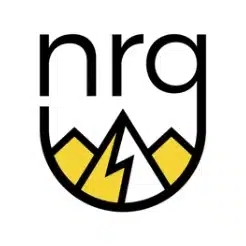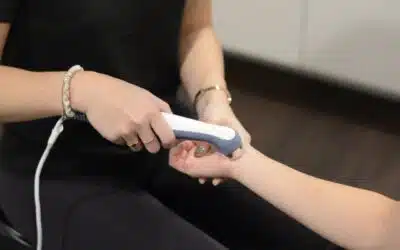I. Introduction
Back pain is a common health condition that affects millions of people worldwide. It can range from mild discomfort to severe and disabling pain, and can be caused by various factors, including injury, poor posture, and underlying medical conditions. Back pain can significantly impact a person’s quality of life, affecting their ability to work, exercise, and carry out everyday activities.
It is essential to address back pain promptly and effectively to prevent it from becoming a chronic condition. While there are many treatment options available, physiotherapy has proven to be a highly effective way to manage back pain.
Physiotherapy is a branch of healthcare that uses physical techniques and exercise to promote healing, manage pain, and restore function. In the context of back pain, physiotherapy can help identify the underlying cause of the pain and provide a personalized treatment plan to address it.
Physiotherapy for back pain typically involves a combination of manual therapy, exercise therapy, education, and advice. The goal of physiotherapy is to relieve pain, promote healing, and prevent the pain from recurring. With the help of a skilled physiotherapist, patients can regain mobility, function, and quality of life.
In this comprehensive guide, we will discuss the causes of back pain, the various physiotherapy techniques used to alleviate back pain, and the benefits of seeking professional help for back pain management. If you are struggling with back pain, this guide will provide you with the knowledge you need to make informed decisions about your treatment options.
II. Causes of Back Pain
Back pain can be caused by various factors, including injury, poor posture, and underlying medical conditions. Some of the most common causes of back pain are:
- Muscular strain and sprain: Muscle strain and sprain are the most common causes of back pain. These occur when the muscles and ligaments supporting the spine are stretched or torn due to improper lifting, sudden movements, or overuse.
- Disc problems: Disc problems such as herniated discs, bulging discs, and degenerative disc disease can cause back pain. These conditions occur when the discs between the vertebrae in the spine become damaged or deteriorate over time.
- Arthritis: Arthritis can affect the spine, causing inflammation and pain. Osteoarthritis is the most common form of arthritis that affects the spine, causing the cartilage between the joints to wear down over time.
- Osteoporosis: Osteoporosis is a condition that causes bones to become weak and brittle, making them more susceptible to fractures. In the spine, osteoporosis can cause compression fractures, leading to back pain.
- Scoliosis: Scoliosis is a condition that causes the spine to curve sideways. This can lead to back pain, especially in severe cases.
- Other medical conditions: Back pain can also be caused by other medical conditions such as fibromyalgia, spinal stenosis, and cancer.
Identifying the underlying cause of back pain is important to provide effective treatment. In some cases, back pain may resolve on its own with rest and self-care. However, if the pain persists or is severe, seeking professional help from a physiotherapist is recommended to prevent the pain from becoming chronic.

III. Physiotherapy for Back Pain
Physiotherapy is a highly effective way to manage back pain. A physiotherapist will develop a personalized treatment plan based on the patient’s specific condition and needs. The treatment plan will typically involve a combination of the following physiotherapy techniques:
- Assessment of back pain: The first step in physiotherapy for back pain is a thorough assessment of the patient’s condition. The physiotherapist will evaluate the patient’s medical history, conduct a physical examination, and may use imaging tests to identify the underlying cause of the pain.
- Manual therapy: Manual therapy is a hands-on physiotherapy approach involving various techniques to alleviate pain and promote healing. This may include massage, mobilization, and manipulation of the affected area.
- Exercise therapy: Exercise therapy is a vital component of physiotherapy for back pain. It involves various exercises designed to stretch, strengthen, and stabilize the muscles supporting the spine. Exercise therapy can help reduce pain, improve flexibility, and prevent future injuries.
- Heat and cold therapy: Heat and cold therapy can be used to alleviate pain and reduce inflammation. Heat therapy helps to increase blood flow to the affected area, while cold therapy helps to reduce swelling and inflammation.
- Electrotherapy: Electrotherapy involves the use of electrical stimulation to promote healing and reduce pain. This may include techniques such as TENS (Transcutaneous Electrical Nerve Stimulation), ultrasound therapy, and interferential therapy.
- Education and advice: Education and advice are essential components of physiotherapy for back pain. The physiotherapist will advise the patient on posture, ergonomics, lifestyle modifications, and pain management strategies to help prevent future injuries and manage pain effectively.
In conclusion, physiotherapy is an effective way to manage back pain. A skilled physiotherapist can develop a personalized treatment plan that addresses the underlying cause of the pain and provides relief from symptoms. If you are struggling with back pain, seeking professional help from a physiotherapist is highly recommended.
IV. Manual Therapy for Back Pain
Manual therapy is a hands-on physiotherapy approach involving various techniques to alleviate pain and promote healing. Manual therapy techniques are often used in combination with exercise therapy, electrotherapy, and education and advice to provide a comprehensive treatment plan for back pain. The following are some of the most common manual therapy techniques used for back pain:
- Massage: Massage involves the manipulation of soft tissues, such as muscles, tendons, and ligaments, using pressure and stretching. Massage can help reduce muscle tension, improve blood flow, and promote relaxation, leading to pain relief.
- Mobilization: Mobilization involves the passive movement of joints and soft tissues to improve their range of motion. Mobilization can help reduce pain, increase flexibility, and promote healing.
- Controlled joint movement: The skilled and controlled movement of joints beyond their regular range of motion can improve joint mobility, alleviate discomfort, and restore function.
Manual therapy techniques are generally safe and effective when performed by a skilled physiotherapist. However, it is important to note that manual therapy may not be suitable for all patients, particularly those with certain medical conditions. It is essential to consult with a physiotherapist to determine the most appropriate treatment plan for your specific condition.
V. Exercise Therapy for Back Pain
Exercise therapy is a vital component of physiotherapy for back pain. It involves various exercises designed to stretch, strengthen, and stabilize the muscles supporting the spine. Exercise therapy can help reduce pain, improve flexibility, and prevent future injuries. The following are some of the most common exercise therapy techniques used for back pain:
- Stretching exercises: Stretching exercises help improve flexibility, reduce muscle tension, and alleviate pain. They involve moving the joints and soft tissues through a range of motion, gradually increasing the stretch over time. Stretching exercises may include hamstring, hip, and lower back stretches.
- Strengthening exercises: Strengthening exercises involve working the muscles that support the spine to improve their strength and endurance. Strengthening exercises can help reduce pain, improve posture, and prevent future injuries. Examples of strengthening exercises include back extensions, planks, and squats.
- Core stabilization exercises: Core stabilization exercises focus on strengthening the muscles supporting the spine, including the abdominal and back muscles. These exercises can help improve posture, reduce pain, and prevent future injuries. Examples of core stabilization exercises include pelvic tilts, bridges, and bird dogs.
Exercise therapy should be performed under the guidance of a skilled physiotherapist to ensure that the exercises are performed correctly and safely. The physiotherapist will develop a personalized exercise plan based on the patient’s specific condition and needs. It is important to note that exercise therapy may not be suitable for all patients, particularly those with certain medical conditions. It is essential to consult with a physiotherapist to determine the most appropriate treatment plan for your specific condition.
VI. Heat and Cold Therapy for Back Pain
Heat and cold therapy are commonly used in physiotherapy to alleviate pain and reduce inflammation. Both heat and cold therapy have unique benefits and are used in different ways to manage back pain. The following are the benefits of each therapy and how to use them for back pain:
- Benefits of heat therapy: Heat therapy helps to increase blood flow to the affected area, relax the muscles, and reduce pain. It is especially beneficial for chronic pain and muscle and joint stiffness. Heat therapy can be applied using hot packs, warm towels, or a warm shower.
- Benefits of cold therapy: Cold therapy helps to reduce inflammation, numb the affected area, and decrease pain. It is especially beneficial for acute injuries or pain caused by inflammation. Cold therapy can be applied using ice packs, cold compresses, or a cold shower.
- How to use heat and cold therapy for back pain: The best way to use heat and cold therapy for back pain depends on the specific condition and needs of the patient. In general, heat therapy is recommended for chronic pain and stiffness, while cold therapy is recommended for acute injuries or pain caused by inflammation.
For heat therapy, apply a warm pack or towel to the affected area for 20-30 minutes at a time, several times a day. Be sure to wrap the heat source in a towel to prevent burns. For cold therapy, apply an ice pack or cold compress to the affected area for 10-20 minutes at a time, several times a day. Be sure to wrap the ice pack in a towel to prevent frostbite.
It is important to note that heat and cold therapy may not be suitable for all patients, particularly those with certain medical conditions. It is essential to consult with a physiotherapist to determine the most appropriate treatment plan for your specific situation.
VII. Electrotherapy for Back Pain
Electrotherapy involves the use of electrical stimulation to promote healing and reduce pain. It is a safe and effective way to manage back pain and is often used in conjunction with manual therapy and exercise therapy. The following are the most common electrotherapy techniques used for back pain:
- TENS (Transcutaneous Electrical Nerve Stimulation): TENS involves the use of a small, battery-operated device that delivers electrical impulses to the affected area. These impulses help block pain signals from reaching the brain, reducing the pain sensation. TENS is a non-invasive, drug-free way to manage back pain.
- Ultrasound therapy: Ultrasound therapy involves the use of high-frequency sound waves to stimulate blood flow and promote healing. It is commonly used to treat soft tissue injuries and can help reduce pain, swelling, and inflammation.
- Interferential therapy: Interferential therapy involves the use of two electrical currents of different frequencies that are applied to the affected area. The currents intersect and create a “beat” frequency that helps to reduce pain and improve blood flow.
Electrotherapy is generally safe and effective when performed by a skilled physiotherapist. However, it is important to note that electrotherapy may not be suitable for all patients, particularly those with certain medical conditions. It is essential to consult with a physiotherapist to determine the most appropriate treatment plan for your specific condition.

VIII. Education and Advice for Back Pain
Education and advice are essential components of physiotherapy for back pain. The physiotherapist will advise the patient on posture, ergonomics, lifestyle modifications, and pain management strategies to help prevent future injuries and manage pain effectively. The following are some of the most common education and advice given to patients with back pain:
- Posture advice: Poor posture is a common cause of back pain. The physiotherapist will provide advice on how to maintain good posture while sitting, standing, and walking. This may involve adjusting the position of chairs and desks or using supportive pillows and cushions.
- Ergonomic advice: Ergonomic advice involves making changes to the patient’s work environment to reduce strain on the back. This may include adjusting the height of workstations, using ergonomic chairs, and taking regular breaks to stretch and move.
- Lifestyle advice: Lifestyle modifications such as weight loss, regular exercise, and smoking cessation can help prevent future back pain. The physiotherapist will provide advice on lifestyle changes that can improve overall health and reduce the risk of future injuries.
- Pain management strategies: The physiotherapist will provide advice on pain management strategies such as ice or heat therapy, stretching exercises, and pain-relieving medication. They may also provide information on relaxation techniques such as meditation and breathing exercises.
Education and advice are crucial to the long-term management of back pain. By providing patients with the knowledge and tools to manage their condition effectively, physiotherapists can help prevent future injuries and improve their quality of life. If you are struggling with back pain, seeking professional help from a physiotherapist is highly recommended.
IX. Conclusion
Back pain can significantly impact a person’s quality of life, affecting their ability to work, exercise, and carry out everyday activities. While there are many treatment options available, physiotherapy has proven to be a highly effective way to manage back pain.
Physiotherapy for back pain typically involves a combination of manual therapy, exercise therapy, education, and advice. The goal of physiotherapy is to relieve pain, promote healing, and prevent the pain from recurring. With the help of a skilled physiotherapist, patients can regain mobility, function, and quality of life.
In summary, the benefits of physiotherapy for back pain include:
- Personalized treatment plans based on the patient’s specific condition and needs
- A hands-on approach to pain management
- Non-invasive, drug-free treatment options
- Education and advice on pain management strategies and lifestyle modifications
If you are struggling with back pain, seeking professional help from a physiotherapist is highly recommended. A skilled physiotherapist can develop a personalized treatment plan to address the underlying cause of the pain and provide relief from symptoms. Don’t let back pain impact your quality of life – seek professional help today.
References use in the article:
- American Academy of Orthopaedic Surgeons. (2013). Lumbar spinal stenosis.
- Arthritis Foundation. (n.d.). Osteoarthritis of the Spine.
- Mayo Clinic. (2021). Scoliosis.
- National Osteoporosis Foundation. (n.d.). Spine Fractures.
- Chiarotto, A., Deyo, R. A., Terwee, C. B., Boers, M., Buchbinder, R., Corbin, T. P., Costa, L. O. P., Foster, N. E., Grotle, M., Koes, B. W., Kovacs, F. M., Lin, C. W. C., Maher, C. G., Pearson, A. M., Peul, W. C., Schoene, M. L., Turk, D. C., & van Tulder, M. W. (2017). Core outcome domains for clinical trials in non-specific low back pain. European Spine Journal, 26(6), 1369–1379.
- Machado, L. A. C., Kamper, S. J., Herbert, R. D., Maher, C. G., & McAuley, J. H. (2009). Analgesic effects of treatments for non-specific low back pain: a meta-analysis of placebo-controlled randomized trials. Rheumatology (Oxford, England), 48(5), 520–527. https://doi.org/10.1093/rheumatology/kep024
- Goode, A. P., Freburger, J., Carey, T. S., & Lewis, C. E. (2012). A randomized trial of manipulative therapy and spinal stabilization for low back pain. Journal of Manipulative and Physiological Therapeutics, 35(5), 359–366. https://doi.org/10.1016/j.jmpt.2012.04.005
- Gross, A., Miller, J., D’Sylva, J., Burnie, S. J., Goldsmith, C. H., Graham, N., Haines, T., Brønfort, G., Hoving, J. L., & Manipulation Trialists, C. (2012). Manipulation or mobilisation for neck pain: a Cochrane Review. Manual Therapy, 17(4), 308–316. https://doi.org/10.1016/j.math.2012.02.007
- Hayden, J. A., van Tulder, M. W., Tomlinson, G., & McGill, S. M. (2005). Meta-analysis: exercise therapy for non-specific low back pain. Annals of Internal Medicine, 142(9), 765–775. https://doi.org/10.7326/0003-4819-142-9-200505030-00013
- Saragiotto, B. T., Maher, C. G., Yamato, T. P., Costa, L. O. P., Menezes Costa, L. C., & Ostelo, R. W. J. G. (2016). Motor control exercise for chronic non-specific low-back pain. The Cochrane Database of Systematic Reviews, 1, CD






0 Comments